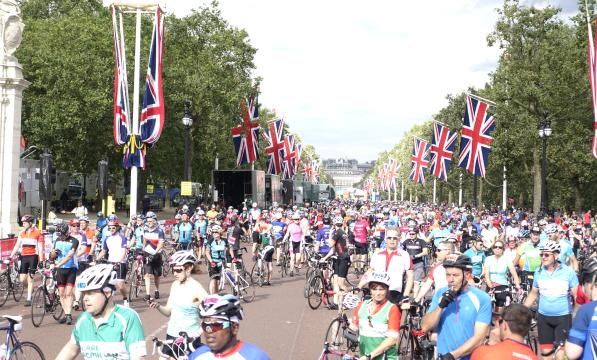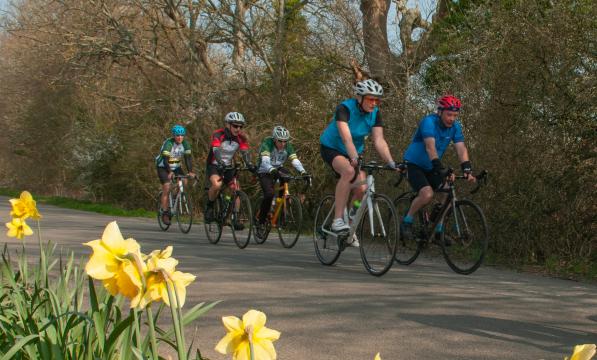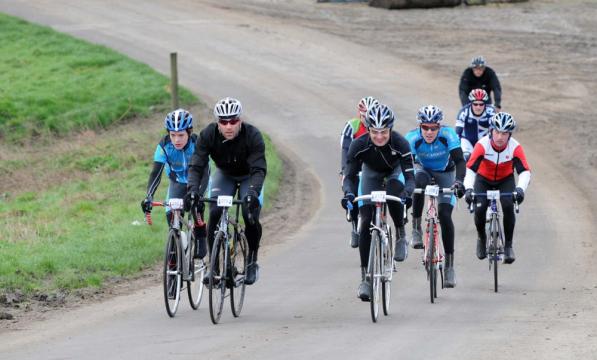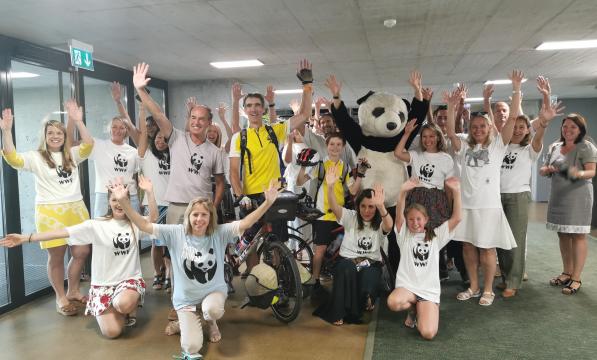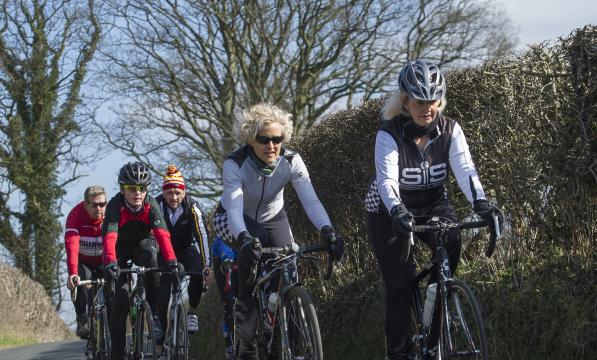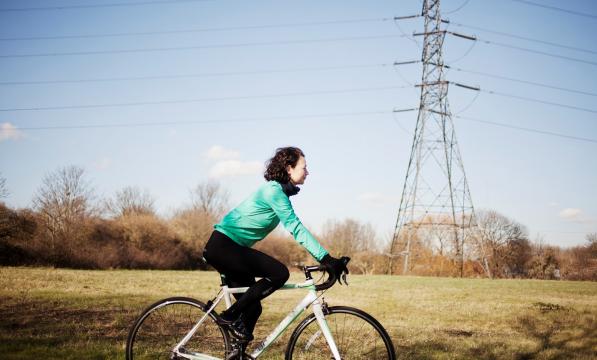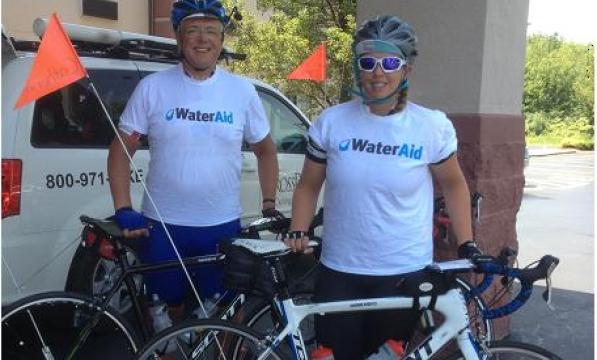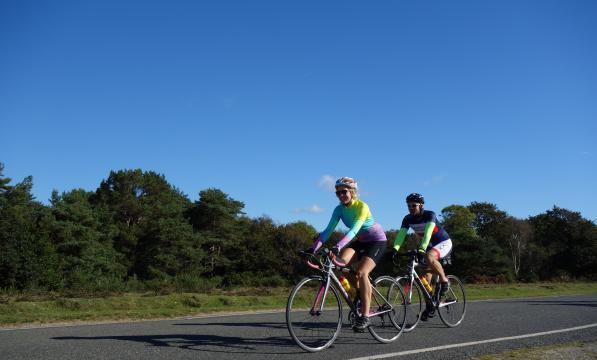How to prepare for your first charity ride

Too many people turn up at the start line of a charity bike ride unready for what lies ahead.
In order not to disappoint all the people who have sponsored you – not to mention yourself – you need to be prepared. Preparation is key to rising to the challenge, achieving your goal and, most importantly, enjoying your first charity bike ride.
If you need some motivation, keep in mind that you are raising vital funds for a great cause and your bike ride will be helping others. If you’d like to raise money for Cycling UK you can do so via Cycling UK’s JustGiving page.
If you are taking part in an organised charity ride then there is not a lot of organising to do other than prepare physically and make sure your bicycle is road worthy.
Getting a place
The first thing to do is secure your place on your chosen ride. Apply for well in advance to avoid disappointment, especially if you are planning on taking part in a popular event.
The majority of charity events have a limit on the number of riders that can take part due to insurance reasons and police advice. You also want to give yourself plenty of time to train, as well as to raise money for your chosen cause.
Training plan
If you have long enough before your charity ride, it’s a great idea to cover the distance at least once prior to it – that way you know that you can complete that distance and you can gauge how much nutrition you require.
If you are new to cycling, slowly build up to the distance. Speed is not important, but distance is. Start off riding for 30 minutes, and increase the time each week to what you can manage. Don’t do too much too soon. As your ride time increases, remember to drink and eat during the ride and immediately afterwards.
If the charity ride you have planned is hilly, be sure to ride a hilly route in training as riding uphill uses a lot more energy than riding on flat roads. Developing your own personal style of climbing hills – be they short or long – is good to do in advance of the event.
Many charities provide participants with a training plan. Or you could try this 10-week training plan by John Storms. Please note, though, this is just a sample – everyone has a different amount of time available to exercise and is starting at their own level of fitness. You will soon get a feel for what works for you and how it fits into your daily routine.
If you’d like to train with others, try joining a local group. There will be lots of people to give you advice and help you along the way. Riding with others is an added incentive, too.
You might also be able to find others doing the same charity bike ride as you on the Cycling UK Forum events page.
Before the big day
The last thing you want is a mechanical problem on the day of your ride, so make sure your bike is in full working order and that it’s comfortable. Do this in the week leading up to the ride, as if it’s left to the last 24 hours before the event, you might not have a bike to ride.
Make sure your saddle height is correct. Make sure your tyres have got plenty of tread and check them for stones or other sharp objects you may have picked up while out training.
Check that your brakes work, that the cables are not frayed, and that the brake blocks still have plenty of life left in them. Then ensure that your gears work, especially the lower ones if the ride is over a hilly route.
If you are not mechanically minded, it might be a good idea to take your bike to your local cycle shop or a qualified local cycle mechanic for a check-up. At the very least, though, you should be able to change an inner tube should you get a puncture. You can’t rely on being able to track down one of the ride stewards and you really don’t want to have to walk to the next feed station.
What to wear
Be prepared for all weather conditions and wear the appropriate clothing. Check the weather forecast in the week leading up to the event.
Layering is key as this will keep you warm and dry; and if temperatures increase you can peel away a layer at a time. A base layer, short-sleeved jersey and arm warmers are the basics.
If rain is forecast, bring a lightweight waterproof jacket that can fold easily into a back pocket. Take along some sunscreen too – even in the UK!
A good guide is to be prepared for either 5 degrees C warmer or cooler as it warms up throughout the day, the wind picks up or a rain shower arrives.
Bring a change of clothes for afterwards, and get changed out of your (probably quite sweaty by now) cycling kit as soon as you can.
What to eat
Bring enough food and drink to get you round the course – this also applies to charity events which advertise feed stations. Don’t depend on the feed stations as they might be poorly stocked or offer nutrition that doesn’t agree with you.
This is another aspect of the ride you can practise prior to your big event. Try different drinks and foods to see what agrees with your body and makes you feel good. One of the all time great mistakes is to try something new and find it makes you feel ill during a bike ride.
One good marker along the way is to check you have drunk a bottle of liquid each hour.
Fuelling is about staying ahead of the game – don’t wait until you feel hungry or thirsty as by then it’s too late and it can be very difficult to restore your equilibrium.
Lastly, bring some food for afterwards so you can start the refuelling process as soon as you finish. Protein or milky drinks are great to take after the event as they repair damaged muscle fibres.
The big day
Eat a decent breakfast that combines protein and carbs – but don’t overdo it as you’ll end up feeling lethargic.
Arrive in good time. If start times are staggered be aware of exactly when you’re scheduled to set off.
Bring a puncture repair kit, a spare inner tube, tyre levers and a pump with you.
Make the most of any checkpoints to keep your water bottles topped up, have a toilet break or just to have a chat before setting off again.
During the ride itself, and particularly at the start, you might be riding in a bunch. Be courteous to other road users and use signals when necessary. Be alert to what other riders around you are doing. For further advice, read more on how to cycle in a group.
Keep in mind that it’s not a race. Go at your own pace, and especially don’t overdo things at the beginning and tire yourself out. And most importantly enjoy yourself! You’re raising money for a worthy cause while doing something you love.

